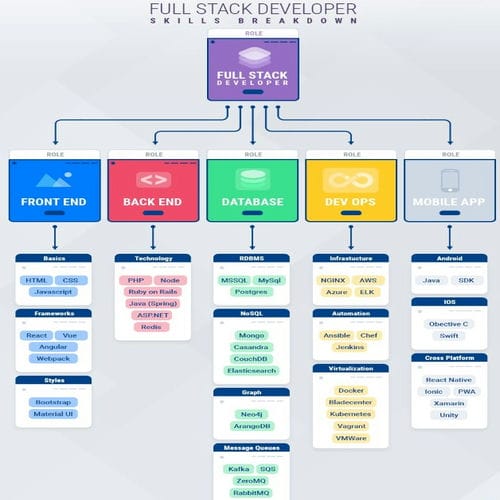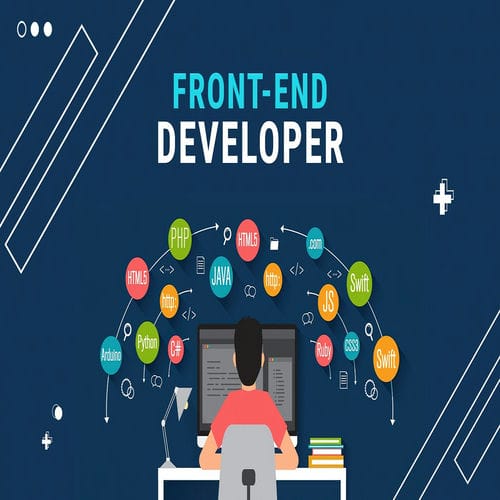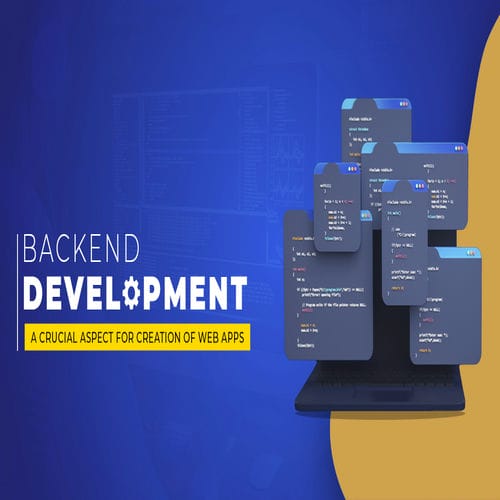Ever wondered about what is full stack web development? If you’ve ever surprised at the smooth functionality of your favourite websites or apps, you’ve witnessed the magic of full stack development in action. But what does it actually involve, and why is it such a hot topic in the tech world?
In this comprehensive guide, we’ll reveal the layers of full stack development to uncover its secrets and explore the exciting opportunities it offers. From front-end design to back-end logic and database management, we’ll delve into every aspect of the full stack development process. Whether you’re a curious newcomer and excited to learn more about it or a seasoned developer looking to expand your skill set, this guide has something for everyone.
By the end, you’ll have a deeper understanding of what it takes to become a proficient full stack developer and how you can use these skills to build innovative digital experiences. Let’s dive in!
What is Full Stack Web Development?
Have you ever wondered what drives the websites and applications you use daily? The engine behind the digital experiences we love and rely on. But what exactly is full stack web development, and why does the tech industry use it so frequently?
1. Unlocking the Mystery
Full stack web development refers to the practice of building both the front-end and back-end components of a website or application. In simpler terms, it involves working on everything from what users see and interact with (front end) to the behind-the-scenes functionality that makes it all work (back end).
2. Front-end
On the front end, full stack developers focus on crafting the user interface (UI) and user experience (UX) using languages like HTML, CSS, and JavaScript. They’re the architects of the visual elements that users interact with, ensuring smooth navigation and engaging design.
3. Behind the Scenes
Meanwhile, on the back end, full stack developers tackle the server-side logic and database management that power the application. This involves writing code that handles requests, processes data, and interacts with the database to collect or store information.
4. The Jacks of All Trades
Full stack developers are essentially the jacks of all trades in the web development world. They possess a versatile skill set that allows them to work across the entire development stack, from designing user interfaces to optimising database performance.

Understanding Full Stack Development
1. Defining Full Stack Development
At its core, full stack development includes the entire variety of web development, from the front end to the back end. It’s about having the skills and expertise to handle every aspect of building a digital product, from conception to implementation.
2. The Front-End Experience
The elegant design, responsive layout, and observant user interface. That’s what the front-end developers have created, who specialise in creating the visual elements and interactive features that users interact with.
3. The Back-End Magic
Behind the scenes, away from the user’s sight, lies the back end – the engine that powers the entire operation. Back-end developers work their magic by building server-side applications, handling data storage, and ensuring smooth communication between the server and the client.
4. Comprehensive Methodology
What sets full stack developers apart is their ability to navigate both worlds – front end and back end – with ease. They’re like the Swiss Army knives of the web development world, equipped with a diverse skill set that allows them to tackle any challenge that comes their way.
5. The Role of Full Stack Developers
Full stack developers don’t just write code – they’re problem solvers, innovators, and creative thinkers. They bridge the gap between design and functionality, bringing digital concepts to life with their expertise and creativity.
Front-End Development
1. Crafting User Interfaces
Front-end development is all about creating user interfaces (UI) that captivate and engage users. It involves translating design ideas into interactive web pages using languages like HTML, CSS, and JavaScript.
2. HTML: The Building Blocks
HTML serves as the foundation of front-end development, providing the structure and content of web pages. Think of it as the blueprint that dictates the layout and act as an organisation of elements on a web-page.
3. CSS: Adding Style and Flair
CSS steps in to add style and flair to HTML elements, transforming them from uninteresting to amazing. With CSS, developers can customise colours, fonts, layouts, and animations to create visually stunning user interfaces.
4. JavaScript: Bringing Interactivity to Life
The key ingredient that makes the web interactive is JavaScript.. It enables developers to create dynamic, responsive web pages with features like form validation, animations, and real-time updates.
5. Frameworks for Efficiency
In the fast-paced world of web development, frameworks like React, Angular, and Vue.js have become essential resources for front-end programmers. These frameworks provide pre-built components and libraries that streamline the development process and enhance productivity.
6. The Art of UI Design
Beyond coding, front-end developers must also possess a keen eye for design principles and user experience (UX) best practices. They strive to create interfaces that not only have a pleasing appearance but also provide easy navigation and smooth interaction.

Back-End Development
Welcome to the world of back-end development – where the real magic happens.
1. Powering the Engine
Back-end development is all about building the server-side logic and infrastructure that enable websites and applications to function smoothly. It involves handling data storage, processing user requests, and managing communication between the server and the client.
2. Languages of the Back End
Back-end developers have access to a wide range of languages and frameworks, each suited to different tasks and scenarios. From Node.js and Python to Ruby on Rails and Django, They have an abundance of tools available to them.
3. Handling Data Like Pro
In the realm of back-end development, databases are supreme. Back-end developers are responsible for designing, implementing, and managing databases to ensure efficient storage and the recovery of data.
4. Securing the Fort
Security is crucial in the world of back-end development. Strong security measures are implemented by back-end developers to protect sensitive data, combat cyber threats, and safeguard the integrity of applications.
5. Implementing Confidently
Once the code is written and tested, it’s time to implement it to a live server for the world to see. Back-end developers supervise the deployment process, ensuring that everything runs smoothly and that the application is accessible to users.
6. Embrace the Back End
Whether you’re drawn to the challenge of solving complex problems or the excitement of creating accessible, high-performance systems, back-end development offers a world of opportunities for aspiring developers.

Database Management
1. Where Data Resides?
Ever wondered where all the information you input on websites goes? Enter the world of database management, where data finds its home and plays a vital role in powering digital experiences.
2. The Heart of Applications
Databases serve as the beating heart of web applications, storing, organising, and obtaining information to meet the needs of users. Whether it’s storing user profiles, product information, or transaction records, databases are essential to current web development.
3. Types of Databases
In the realm of database management, there are two main types of databases: relational and NoSQL. Relational databases, like MySQL and PostgreSQL, organise data into tables with predefined relationships. On the other hand, NoSQL databases, such as MongoDB and Cassandra, offer more flexibility and scalability for handling unstructured data.
4. Designing Data Models
Database management involves more than just storing data – it’s about designing efficient data models that optimise performance and scalability. Database administrators and back-end developers collaborate closely to establish linkages, build schemes, and optimise queries for optimal performance.
5. Querying and Manipulating Data
Querying is the process of obtaining information from a database using specialised commands. Back-end developers use query languages like SQL (Structured Query Language) to perform operations such as selecting, inserting, updating, and deleting data from databases.
6. Scalability and Performance
As web applications grow in complexity and user base, scalability becomes a critical consideration in database management. Back-end developers implement strategies like sharding, replication, and caching to ensure that databases can handle increasing loads without compromising performance.
Whether you find the complexities of data modeling fascinating or the difficulties of scaling databases to meet growing demands, database management offers a wealth of opportunities for aspiring developers Top of Form
Full Stack Development Life cycle
1. From Concept to Completion
Ever wondered how websites and applications go from mere ideas to fully functional digital experiences? Enter the full stack development lifecycle – a journey that takes projects from conception to deployment and beyond.
2. Planning and Requirement Analysis
Every successful project starts with a solid plan. Full stack developers collaborate with stakeholders to gather requirements, define project goals, and create a roadmap for development. This stage sets the foundation for the entire development process.
3. Design and Prototyping
With a clear understanding of project requirements, full stack developers move on to the design phase. They create wireframes, mockups, and prototypes to visualize the user interface and gather feedback from stakeholders. This ultimate process ensures that the final product meets user needs and expectations.
4. Development and Implementation
Once the design is finalized, it’s time to bring the vision to life through coding. Full stack developers make use of their expertise in front-end and back-end technologies to build the various components of the application, integrating features and functionality along the way.
5. Testing and Quality Assurance
Quality is the top priority in full stack development. Developers conduct tough testing to identify and fix any bugs or issues that may arise. This includes unit testing, integration testing, and user acceptance testing to ensure that the application functions smoothly across different devices and environments.
6. Deployment and Maintenance
The final stage of the full stack development life cycle is deployment or launched of the application. Developers launched the application to a live server, making it accessible to users. But the journey doesn’t end there – full stack developers also oversee ongoing maintenance and updates to keep the application running smoothly and adapt to changing user needs.

Full Stack Web Development Advantages and Disadvantages
Advantages:
- Flexibility: Full stack developers possess a broad skill set, allowing them to work on both the front end and back end of web applications. This flexibility makes them highly adaptable to various projects and roles within a development team.
- Efficiency: By having a deep understanding of the entire development stack, full stack developers can streamline the development process. They can smoothly connect front-end and back-end components, leading to faster development cycles and quicker time-to-market for projects.
- Cost-Effectiveness: Hiring full stack developers can be cost-effective for businesses, especially startups and small businesses with limited resources. Instead of hiring separate front-end and back-end developers, companies can employ full stack developers who can handle multiple aspects of a project.
- Comprehensive Problem-Solving: Full stack developers are adept at identifying and solving problems across the entire development stack. This broad approach to problem-solving allows them to troubleshoot issues more efficiently and ensure smoother project delivery.
- Cross-Functional Collaboration: Full stack developers can collaborate effectively with designers, product managers, and other stakeholders, bridging the gap between technical and non-technical teams. Their ability to communicate across disciplines enhances teamwork and facilitates project success.
Disadvantages:
- Learning Curve: Mastering full stack development requires a significant time investment to acquire proficiency in both front-end and back-end technologies. The learning curve can be steep, especially for beginners with limited programming experience.
- Depth vs. Breadth: While full stack developers have a broad skill set, they may lack the depth of expertise found in specialized front-end or back-end developers. This can be a disadvantage for complex projects that require highly specialised knowledge in specific areas.
- Resource Intensive: Full stack development can be resource-intensive, particularly for large-scale projects with demanding requirements. Balancing responsibilities across the entire development stack may require additional time and effort to ensure quality and maintainability.
- Risk of Burnout: As a full stack developer, managing various roles might increase the risk of burnout. The constant need to switch between front-end and back-end tasks, can affect developers’ mental and physical health when combined with project expectations and tight timelines.
- Dependency on Tools and Frameworks: Full stack development often relies on various tools and frameworks to streamline the development process. While these tools can improve productivity, they also introduce dependencies and potential limitations that developers must navigate.
Skills and Qualities of Full Stack Developers
1. Technical Proficiency
Technical expertise is crucial to everything.. Full stack developers must be well-versed in a variety of programming languages, frameworks, and tools spanning both front-end and back-end development. From HTML and CSS to JavaScript, Node.js, and beyond, adaptability is essential..
2. Problem-Solving Abilities
Full stack development is a puzzle, and full stack developers are the master problem solvers. They possess strong analytical skills and aptitude for troubleshooting issues across the entire development stack, from debugging front-end code to optimizing database performance.
3. Adaptability and Continuous Learning
In the ever-evolving landscape of web development, adaptability is essential. Full stack developers must stay up-to-date of emerging technologies, frameworks, and best practices to remain competitive in the field. Continuous learning is not just a requirement – it’s a way of life.
4. Collaboration and Communication Skills
Full stack developers don’t work in isolation. They collaborate closely with designers, product managers, and other stakeholders to bring projects to life. Effective communication skills are essential, ensuring that everyone is on the same page and working towards a common goal.
Career Opportunities in Full Stack Development
Are you ready to embark on a career path that offers endless opportunities for growth and innovation? Full stack development could be your ticket to a dynamic and rewarding career in the tech industry.
1. Job Roles and Responsibilities
Full stack developers are in high demand across industries, from start-ups to multinational businesses. They take on various roles, including web developers, software engineers, and technical leads, depending on their level of experience and expertise. Responsibilities may range from building and maintaining websites and applications to leading development teams and driving technical decisions.
2. Salary Trends and Market Demand
With great skills comes great earning potential. Full stack developers command competitive salaries because of their distinct combination of front-end and back-end expertise. As businesses increasingly rely on digital platforms to reach customers and streamline operations, the demand for skilled full stack developers continues to grow, creating abundant job opportunities in the market.
3. Growth and Advancement Prospects
For those that specialise in full-stack development, the possibilities are endless. With experience and continued learning, they can advance into roles such as software architects, technical managers, and even startup founders. Whether you’re passionate about building cutting-edge web applications, leading development teams, or establishing your own business route, a career in full stack development offers limitless possibilities for professional growth and success.
4. Seize the Opportunity
Ready to seize the opportunity and unlock your full potential in the world of full stack development? Whether you’re a recent graduate looking to kick start your career or a seasoned professional seeking new challenges, full-stack development offers enormous options and limitless possibilities.
Best Practices and Resources
1. The Path to Mastery
So, you’ve decided to dive into the world of full stack development – but where do you begin? Fear not! We’ve assembled a goldmine of best practices and resources to help you on your path to expertise.
2. Continuous Learning Resources
In the fast-paced world of technology, continuous learning is essential. Fortunately, there’s no shortage of resources to help you stay ahead of the curve. Online platforms like Coursera, Udemy, and Codecademy offer a number of courses covering everything from beginner basics to advanced topics in full stack development.
3. Online Communities and Forums
Joining online communities and forums like Stack Overflow, GitHub, and Reddit allows you to connect with fellow developers, seek advice, and share knowledge. These vibrant communities are invaluable sources of support and inspiration on your full stack journey.
4. Project-Based Learning Platforms
They say the best way to learn is by doing, and project-based learning platforms like FreeCodeCamp, The Odin Project, and Hackerrank offer the perfect opportunity to put your skills to the test. Dive into real-world projects, tackle coding challenges, and build a portfolio that showcases your expertise to potential employers.
5. Coding Standards and Documentation
As you refine your skills as a full stack developer, don’t forget the importance of coding standards and documentation. Writing clean, well-organised code and maintaining comprehensive documentation not only makes your code easier to understand and maintain but also demonstrates professionalism and attention to detail.

Conclusion
Congratulations on completing your journey through the world of full stack web development! By now, you’ve gained a solid understanding of what full stack development comprises, from front-end design to back-end logic and database management. Now that you have the necessary abilities and information, you’re prepared to embark on your full-stack adventure.
But the learning doesn’t stop here. To continue your growth as a full stack developer, explore the resources and communities mentioned to deepen your understanding and expand your expertise.
Ready to take your full stack skills to the next level? Visit devtrain.co for a carefully selection of courses, tutorials, and resources designed to help you master the art of full stack development. Join our community of learners and unleash your full potential in the exciting world of web development!


